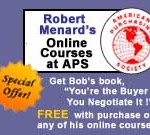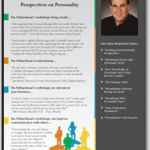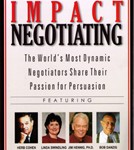Editor’s note: Dr. Hough is a frequent contributor to this blog.
The purchasing profession changed significantly between 1945 and 1970. Gratuities and entertainment were commonplace after WWII. By 1970 a high percentage of organizations began to frown on such practices. Buyers from large companies still went out to lunch with suppliers, but the lunches were fewer and of a shorter duration. Some companies banned them altogether. From the sixties onward companies began sending out letters to suppliers before the holidays indicating that gratuities were not to be given to employees.
The trend since the seventies has continued. Few companies give anything significant to buyers. Any gratuities given are usually in the form of a low cost consumable product or products that contain the supplier’s advertisement. There are many companies that make their living by manufacturing or distributing these low priced “promotional” products. It is therefore unlikely that the practice of giving these types of items to customers will end for a long time to come.
Purchasing operations became more centralized in the mid-sixties and thereafter. There were periods when the trend was reversed with more decentralization then followed by more consolidation. Centralized operations tended to promote better policies and procedures and more staff functions. Purchase analysis became a separate function in some large organizations.
During the seventies general management began to pay more attention to the buying function. The cost of holding inventory came under scrutiny. Purchasing management started using Economic Order Quantity formulas. Value Analysis was used by large corporations to change the design of products to serve the function required at a lower cost.
In the sixties and seventies nearly all purchasing systems were manual. Requisitions were written by hand and hand delivered to the buyer from processing. Filing systems were manual. The average paper purchase order was a snap-out form that had five or six copies. There were two copies sent to the supplier, one or two copies for the purchasing file, one copy for accounting, and one copy for the receiving function.
Most buyers at that time had little idea how much they spent annually or how much was spent with each supplier or for each product. Any statistics needed to be gathered by a long hand process.
Few purchasing personnel had college degrees except in the large companies. Consequently, pay was lower and promotions into other management functions or general management was rare indeed.
Communication was by telephone or by regular mail. Of course today, all that is changed. First came the fax messages and now e-mail. The telephone is still used but not as frequently.
Today most purchasing professionals can obtain volume statistics simply by asking for them. Many can print out a report on their computer screens or on a hard copy.
Today purchase orders are increasingly being handled electronically via internets and extranets. Purchase orders are generated by computer programs that minimize typing effort and check for spelling or other errors. Many of the systems tie accounting, receiving, and purchasing together. Some provide the user with the ability to submit requisitions on-line.
Today more and more buyers are obtaining product and supplier information on the Web or Internet. Increasing numbers are using the Internet to place orders. This may create problems if orders are not properly documented with clauses and terms to protect the company’s interest.
Too many non-purchasing personnel are now being given the authority to place orders by using procurement cards and to use the Internet to place orders. We are afraid that these practices will cause companies to lose control of their purchase costs.
There is now a great emphasis on supply chain management. It is not certain if this will weaken the purchasing function. Perhaps this is a fad, perhaps not, but capable purchasing professionals will always be needed.
There will always be the need for salespeople and buyers to negotiate with them. Such buyers will need to be proficient in use of the computer as well as knowledgeable about negotiating techniques and the legal aspects of business transactions. Surely the requirements for more education and training will equate to higher salaries for the profession. It is almost certain that the better jobs will go to those who are certified and who have a high level of training.














